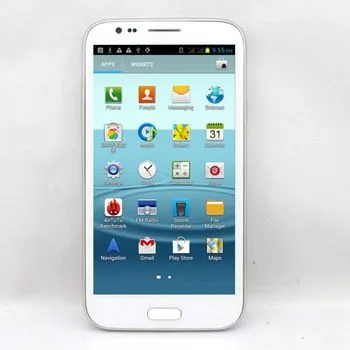
Inleiding: De opkomst van aanraaktechnologie
De opkomst van aanraaktechnologie heeft onze interactie met smartphones veranderd, waardoor ze intuïtiever en gebruiksvriendelijker zijn dan ooit tevoren. Maar wanneer ontstonden deze revolutionaire apparaten voor het eerst? Dit artikel verkent de intrigerende geschiedenis van aanraakgevoelige smartphones en speculeert over wat de toekomst zou kunnen brengen.
Vroege experimenten: De geboorte van elektrostatische invoerapparaten
De jaren 1980: Baanbrekende aanraaktechnologie
In het begin van de jaren 1980 begonnen onderzoekers van de Universiteit van Californië in Irvine te experimenteren met een nieuw concept dat bekend staat als "elektrostatische invoerapparaten". Deze vroege prototypes gebruikten een elektrisch veld om de positie van de vinger van een gebruiker op het scherm te detecteren, waardoor eenvoudige handelingen zoals tikken en vegen mogelijk werden. Het zou echter nog enkele jaren duren voordat deze technologie kon worden aangepast voor wijdverspreid commercieel gebruik.
Belangrijkste innovaties: Het eerste capacitieve aanraakscherm
1984: Een doorbraak in aanraakinterfaces
Een van de belangrijkste doorbraken in de ontwikkeling van aanraakgevoelige smartphones vond plaats in 1984, toen Tom Graedel en zijn team bij General Electric het eerste commercieel succesvolle capacitieve aanraakscherm introduceerden. Dit innovatieve apparaat gebruikte elektrische capaciteit tussen de vinger van de gebruiker en het scherm om aanrakingen nauwkeurig te detecteren en zette daarmee een nieuwe standaard voor responsiviteit en precisie in aanraaktechnologie.
Vroege adoptie: Het aanraakscherm betreedt de consumentenmarkt
1989-2001: Het bereik van aanraaktechnologie vergroten
Eind jaren 1980 en begin jaren 2000 deed aanraaktechnologie haar intrede op de consumentenmarkt. In 1989 bracht IBM de eerste personal computer met geïntegreerd aanraakscherm op de markt, waarmee het potentieel van deze technologie werd aangetoond. Het begin van de jaren 2000 bracht nog meer vooruitgang, zoals de introductie door Pioneer Corporation van het eerste autonavigatiesysteem met een aanraakscherm in 2000, en de release door Handspring van de Visor PDA met een stylusgebaseerd aanraakscherm in 2001.
De Apple revolutie: Touch-technologie wordt mainstream
2007: De iPhone en de Multi-Touch revolutie
Apple Inc. heeft het profiel van aanraaktechnologie aanzienlijk verbeterd met de lancering van de iPhone in 2007. Het multi-touch display van de iPhone, waarmee gebruikers bewegingen als knijpen en zoomen konden uitvoeren, zette nieuwe maatstaven voor smartphoneontwerp en gebruiksvriendelijkheid. Deze innovatie stimuleerde andere fabrikanten om soortgelijke technologie in hun apparaten te integreren, wat een golf van creativiteit en ontwikkeling in de mobiele industrie teweegbracht.
Vooruitkijken: De toekomst van apparaten met aanraakfunctionaliteit
Functies van de volgende generatie: Wat kunnen we verwachten?
Naarmate de technologie zich blijft ontwikkelen, zullen aanraakgevoelige apparaten naar verwachting nog geavanceerdere functies en mogelijkheden bevatten. Experts voorspellen dat toekomstige aanraakgevoelige smartphones holografische displays of virtual reality-functies kunnen bevatten, waardoor gebruikers op geheel nieuwe manieren met hun apparaten kunnen omgaan. De mogelijkheden zijn enorm en de toekomst van aanraaktechnologie ziet er veelbelovend uit.
Conclusie: De toekomst van aanraaktechnologie omarmen
Hoewel aanraaktechnologie relatief jong is, heeft het al een revolutie teweeggebracht in de manier waarop we communiceren en omgaan met de digitale wereld. Als we naar de toekomst kijken, is het spannend om ons de mogelijke ontwikkelingen op dit innovatieve gebied voor te stellen en hoe deze onze interactie met smartphones met aanraakfunctionaliteit verder kunnen verbeteren.
Samenvatting FAQ: De toekomst van smartphones met aanraakfunctionaliteit verkennen
V: Wanneer kwam aanraaktechnologie voor het eerst op?
A: De aanraaktechnologie begon begin jaren 1980 vorm te krijgen met experimenten met elektrostatische invoerapparaten. Het eerste significante commerciële succes was in 1984 met de introductie van het capacitieve aanraakscherm door General Electric.
V: Wat was een belangrijke mijlpaal in de adoptie van aanraaktechnologie?
A: Een belangrijke mijlpaal was de introductie van de iPhone door Apple in 2007, waarmee de multi-touch technologie populair werd en een nieuwe standaard werd gezet voor de bruikbaarheid en het ontwerp van smartphones.
V: Wat heeft de toekomst in petto voor smartphones met aanraakfunctionaliteit?
A: Toekomstige smartphones met aanraakfunctionaliteit kunnen geavanceerde technologieën bevatten zoals holografische schermen en virtuele realiteit, waardoor gebruikers op nieuwe manieren met hun apparaten kunnen communiceren.
